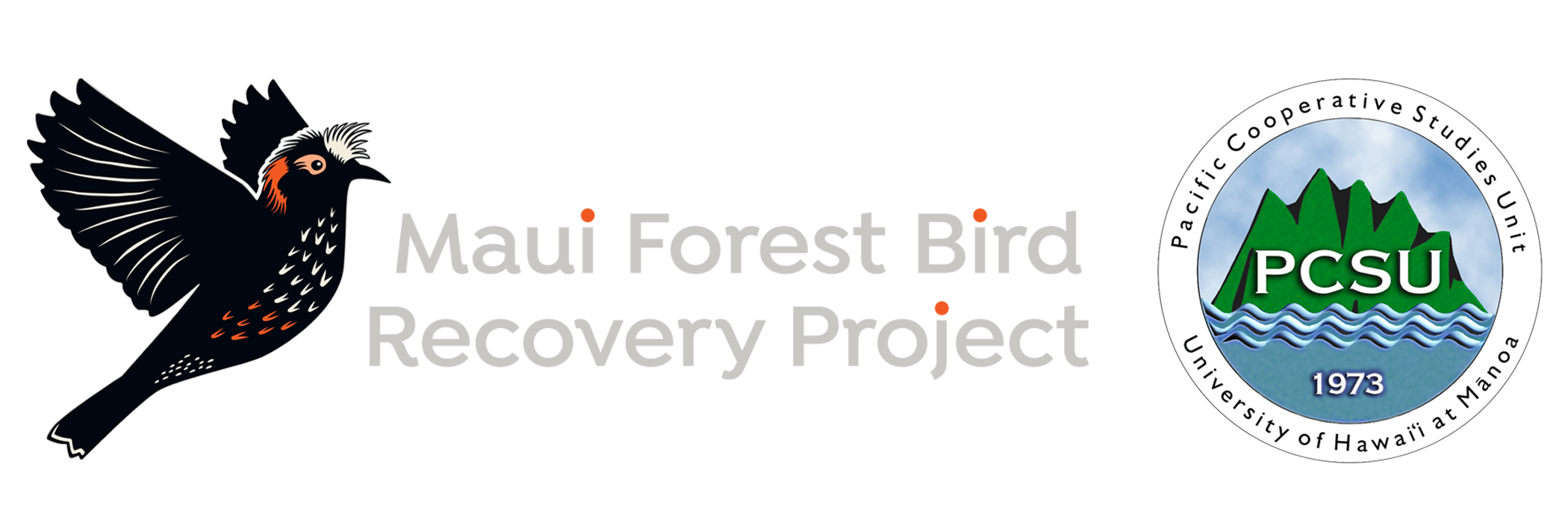ʻAkohekohe Recovery
Applying Innovative Conservation TechniquesThe ʻākohekohe, or Crested Honeycreeper (Palmeria dolei), is one of Hawaiʻi’s rarest forest birds, currently found only in a ~20 km² area on the windward slope of Haleakalā Volcano, between 1,600–2,100 meters (5,249–6,890 ft). Historically, it inhabited both Maui and Moloka‘i, but today its range is limited to just 5% of its former extent on Maui alone.
The main threat to the ʻākohekohe is avian malaria, transmitted by non-native mosquitoes that thrive in warming climates. Their limited range reflects their inability to survive in lower elevations where disease is more prevalent.
Current Population Status: Endangered
As of 2022, the ʻākohekohe population was estimated at 3,360 ± 590 individuals—a nearly 70% decline over the past two decades. Their occupied habitat has shrunk by 65% since 2001, which has become a narrow, fragmented band of mostly disease-free forest.
Without effective mosquito control, models predict the species could go extinct in the wild within 10 years. By 2100, suitable habitat may shrink further to just 7 km², according to climate projections.
![]()
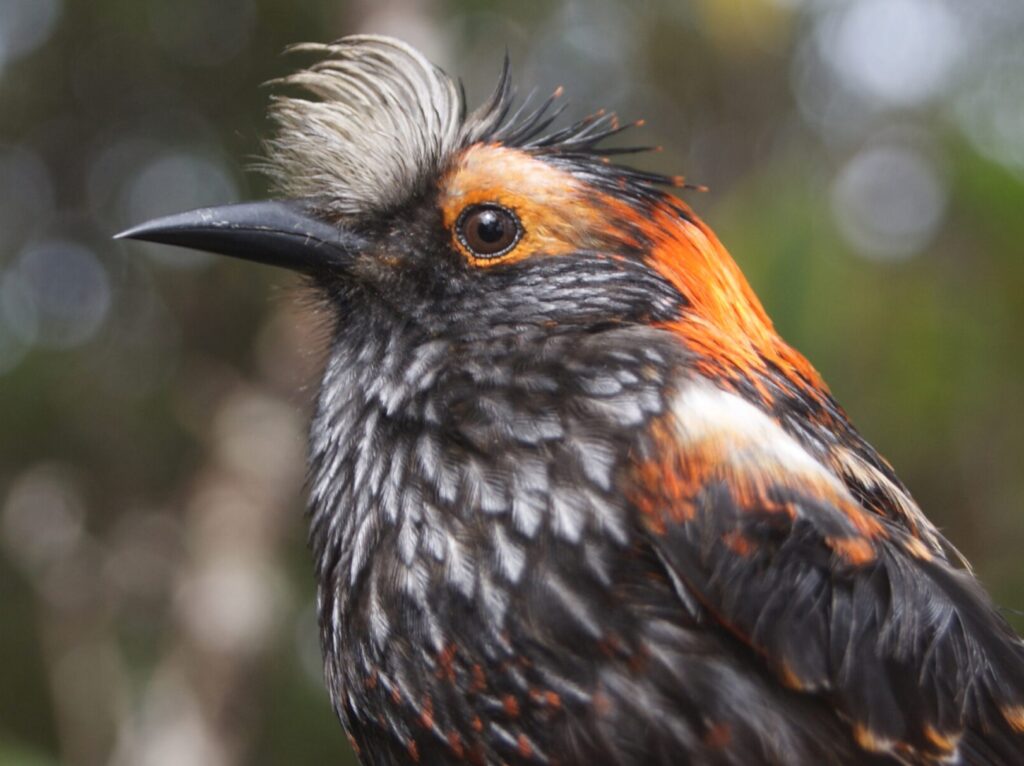
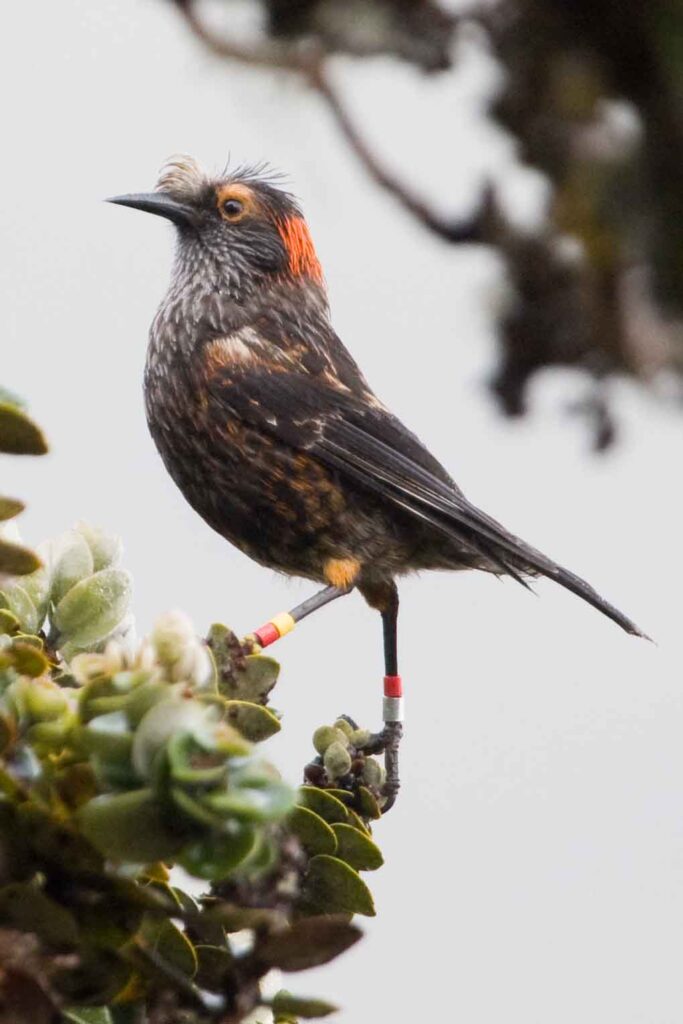
Behavior & Ecology
- Adults are territorial, occupying small home ranges (~0.57 ha), while juveniles roam farther (~25.92 ha), increasing disease risk.
- Pairs may raise multiple broods per season; fledglings are independent by two weeks.
- Color-banding studies have recorded individuals surviving up to 15 years.
- ʻĀkohekohe are highly active and aggressive, which makes them especially challenging to hold in captivity.
Conservation Efforts
Mosquito Control
Controlling mosquitoes—primarily via the Incompatible Insect Technique (IIT) using Wolbachia male mosquitoes—is the highest priority conservation action. These efforts aim to suppress mosquito populations across existing ʻākohekohe habitat.
Captive Care Trials
Because ʻākohekohe are poor candidates for traditional captive programs, a 2023 trial allowed field teams to temporarily hold individuals overnight to test husbandry techniques under State and Federal permits. Five birds were captured, banded, and released after short-term care. All have since been re-sighted, and observations are informing future translocation protocols.
Exploring Translocation to Hawai‘i Island
To increase the species’ resiliency and redundancy, biologists are evaluating the feasibility of establishing a second population on high-elevation, disease-free forest on Hawai‘i Island. This conservation introduction could offer refuge while mosquito control efforts expand across Maui.
Key steps underway:
- Appointment of Paul Radley to lead coordination and feasibility assessment.
- Formation of a working group of experts (first meeting held September 2024) that are investigating the appropriateness and feasibility of a conservation translocation to Hawai‘i Island for the ʻākohekohe.
- Production of a conservation translocation plan and completion of Federal and State Compliance and permitting.
- Site evaluation of 10 candidate release sites guided by the newly published Identifying Conservation Introduction Sites for Endangered Birds as well as Strength, Weakness, Opportunity, and Threat (SWOT) analysis through site visits and a Cultural Impact Assessment.
- To help guide translocation planning, we’ll use a Population Viability Analysis (PVA) to estimate how many ʻākohekohe, and of which age classes, would need to be released on Hawai‘i Island to create a stable population. This modeling tool uses survival, breeding, and demographic data to assess the chances of long-term success.
Next Steps
- Submit findings from 2023 holding trials for publication.
- Continue conducting point counts and population monitoring, while also tracking color-banded ʻākohekohe. This helps us gather information on population size, survival rates, movement patterns, and behavior.
- Evaluate translocation risks, permitting, logistics, and funding opportunities.
- Maintain working group meetings for coordinated action.
Learn More
Visit our Research and Publications page to access reports, journal articles, and updates on our ongoing efforts to save the ʻākohekohe from extinction. Other suggested links include:
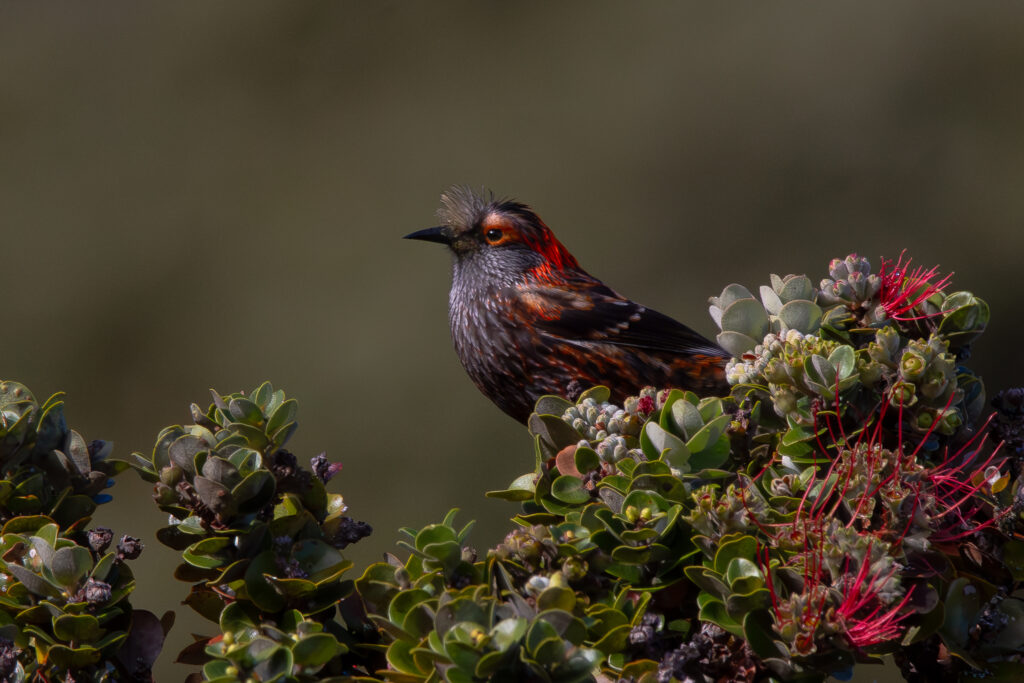
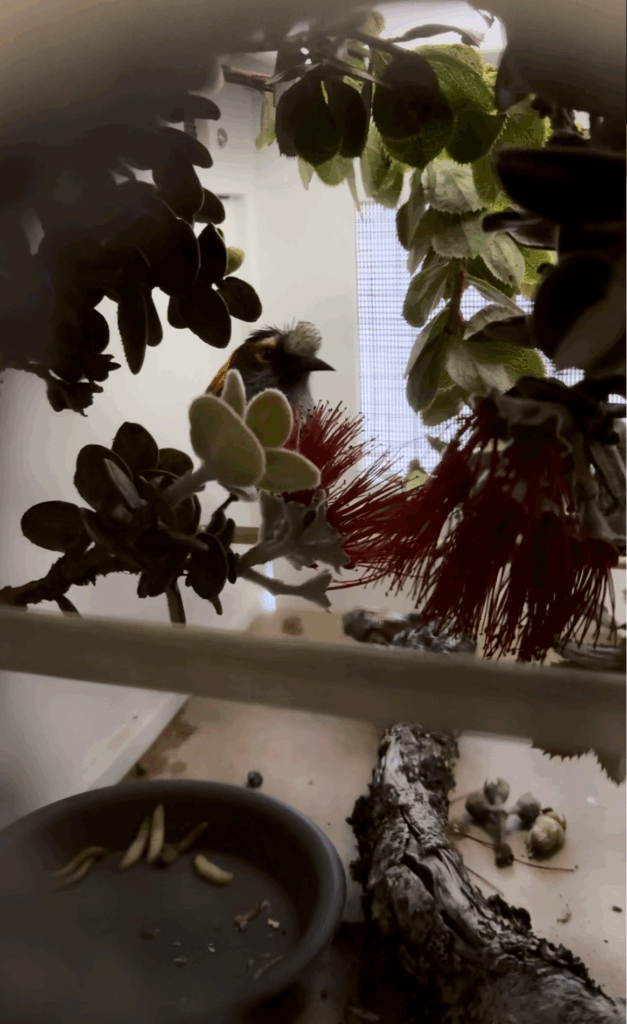
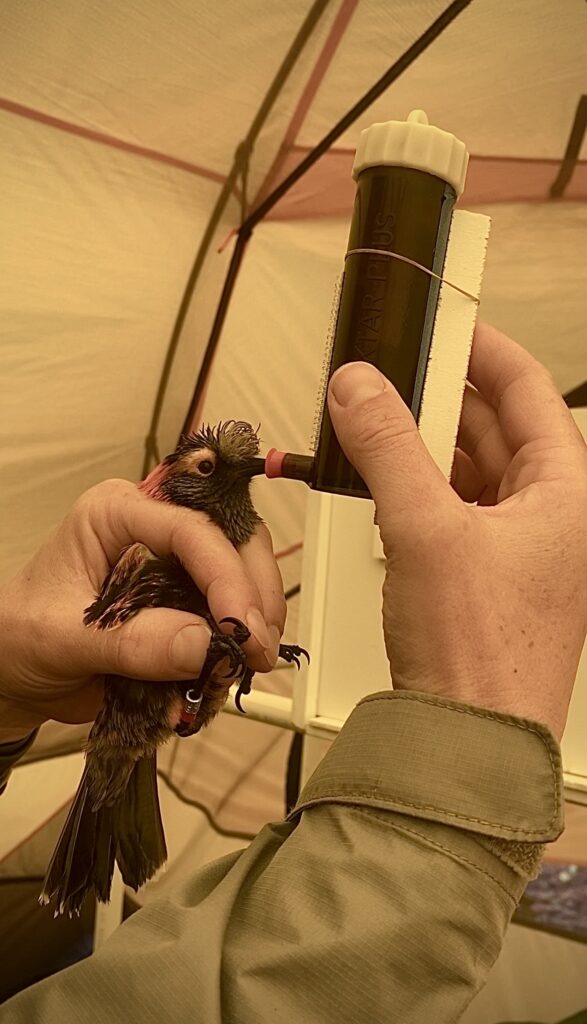
Save the Forest, Save the Birds
It takes a community of dedicated individuals and support to make conservation happen
